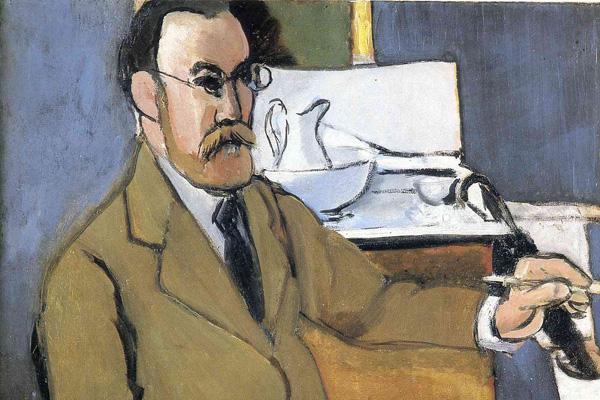This week, as part of Notable’s ongoing Art 101 feature, our team has decided to go beyond popular works and discover the lives of the artists behind them. However, this is not your typical biography compilation: The following profiles contain all the information you wouldn’t usually hear on organized museum tours.
Listed below are exciting facts about three Notable artists. When conversing about art, you’re going to want to include some information that your acquaintance(s) will remember. They will always know you as the one who made their jaw drop and say, “Dali did What?” Consider it intellectual gossip or colloquial fun; you’re going to want to read this.
Henri Matisse: The Vivid Enthusiast (pictured above, self portrait)
Matisse is known to the art world as the one who gave it colour. Initially influenced by the brilliant light and saturated tones of southern France, Matisse’s work highlights his emotional response to reality rather than replicating the external world. Although not a large participant in scandal, Matisse is responsible for a few Notable things.
– Known as the leader of Les Fauves, French for “Wild Beasts,” Matisse was known as the number one bad boy in French painting during his career. In the beginning, no one liked his vibrant paintings, but were forced to accept his pioneer efforts. A true rebel, Matisse soon rose to superstar status.
– Advertising, fashion and interior design owe much to Matisse’s work. Influences from his paintings are evident in furniture and household items, fashions by Paul Smith, and even the London 2012 Olympic logo.
– Matisse’s Pink Nude, painted in 1935, is a rendition of his studio assistant Lydia Delectorskaya. Matisse fell in love with this girl, 20 years younger than him at the time. He soon ended his 40-year marriage with wife Amelie, and Lydia soon became Matisse’s full-time lover and muse.
Jackson Pollock: The Hopeless Creative

What constitutes a Pollock painting? One might say a splash of white there, a drip of black here, a dash of red there. His works are without a doubt unconventional, yet visionary. Pollock spearheaded the abstract impressionist movement and defined New York City as the modern art capital during the mid-20th century. The success of his nonrepresentational works, though, owes itself to Pollock’s hardships and defiance.
– Aside from being an accomplished painter, Pollock is known for being a crazed alcoholic. In drunken fits, Pollock once threatened a friend with an axe, engaged in violent bar fights, developed an alter ego named “Hugo,” and stole food and gasoline. People often bought Pollock drinks at the bar to observe his strange drunken jaunts.
– Fame was not good enough for Pollock. When his 1949 exhibition at Betty Parsons Gallery sold out, it made him feel like a fake. As a result, Pollock often provided insincere scripted answers to interviews, and often hid from cameras. This caused Pollock to question the legitimacy of his work, further spiraling him into a drunken depression.
– Pollock chose to use numbers instead of words and phrases to title his work, in order to direct attention to the pure quality of his painting. Often dark in hue and wildly abstract, his numbered works are perfected by his “drip” method. Pollock’s No. 5 is exemplary of this, sold at Sotheby’s in 2006 for 140 million dollars. It is the most expensive contemporary painting sold to date.
Salvador Dali: The Eccentric Spectacle

As the driving force of the Surrealist movement, Dali combined the unconventional and everyday to create revolutionary work. Largely influenced by Freudian psychoanalytic theory, he believed in the construction of reality: How we interpret visual data leads to the fundamental question of how we see life. Not only was he a trailblazer in the art world, but a whiz in personal publicity.
– As a shy 18-year-old, Dali moved to Madrid to study fine arts. It was there where he established his crazy style, eventually becoming expelled for stating none of his teachers were accomplished enough to examine his work. He became one of the first artists to serve “publicity,” injecting fun into the then-pompous world of fine art.
– Dali understood branding in the truest sense. He established Surrealism’s appeal as mysterious and peculiar, therefore making it more interesting. Modern advertising owes a lot to Dali for this style: The success of Chupa Chups Confectionary Co. owes itself to Dali and his design of their logo and brand in 1969.
– Dali was a regular at any lavish, star-studded party he could gain access to. A master of creating spectacular stunts, crowds soon developed to get a glimpse of the artist. When dining at the St. Regis Hotel in NYC, Andy Warhol stopped by to give Dali one of his original Marilyn paintings. Detesting Warhol’s work, Dali urinated all over the painting in the hotel’s dining room.
Now that you know the inside scoop on some of the world’s most famous artists, prepare to wow your friends and colleagues with fresh alternatives to lackluster celebrity gossip.







